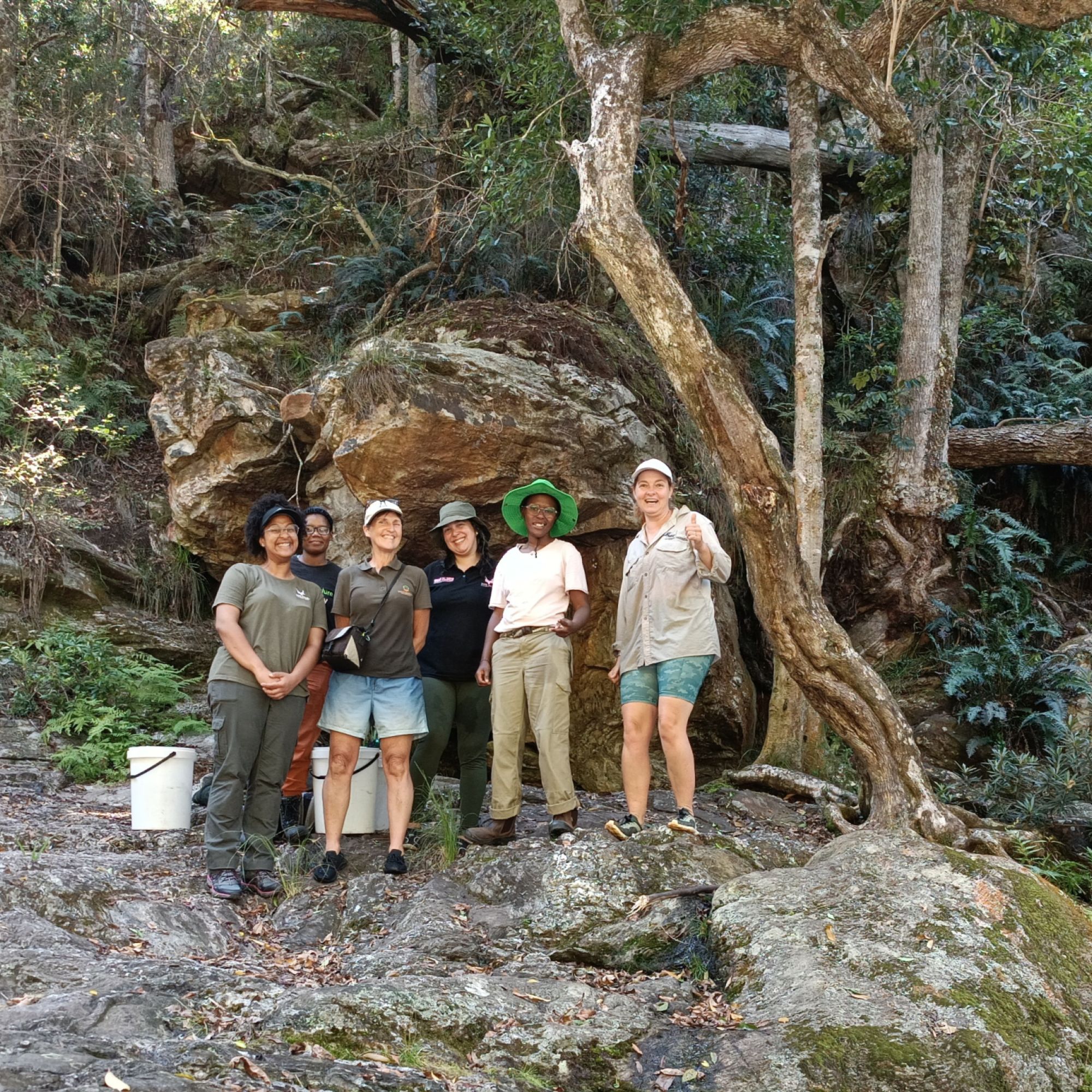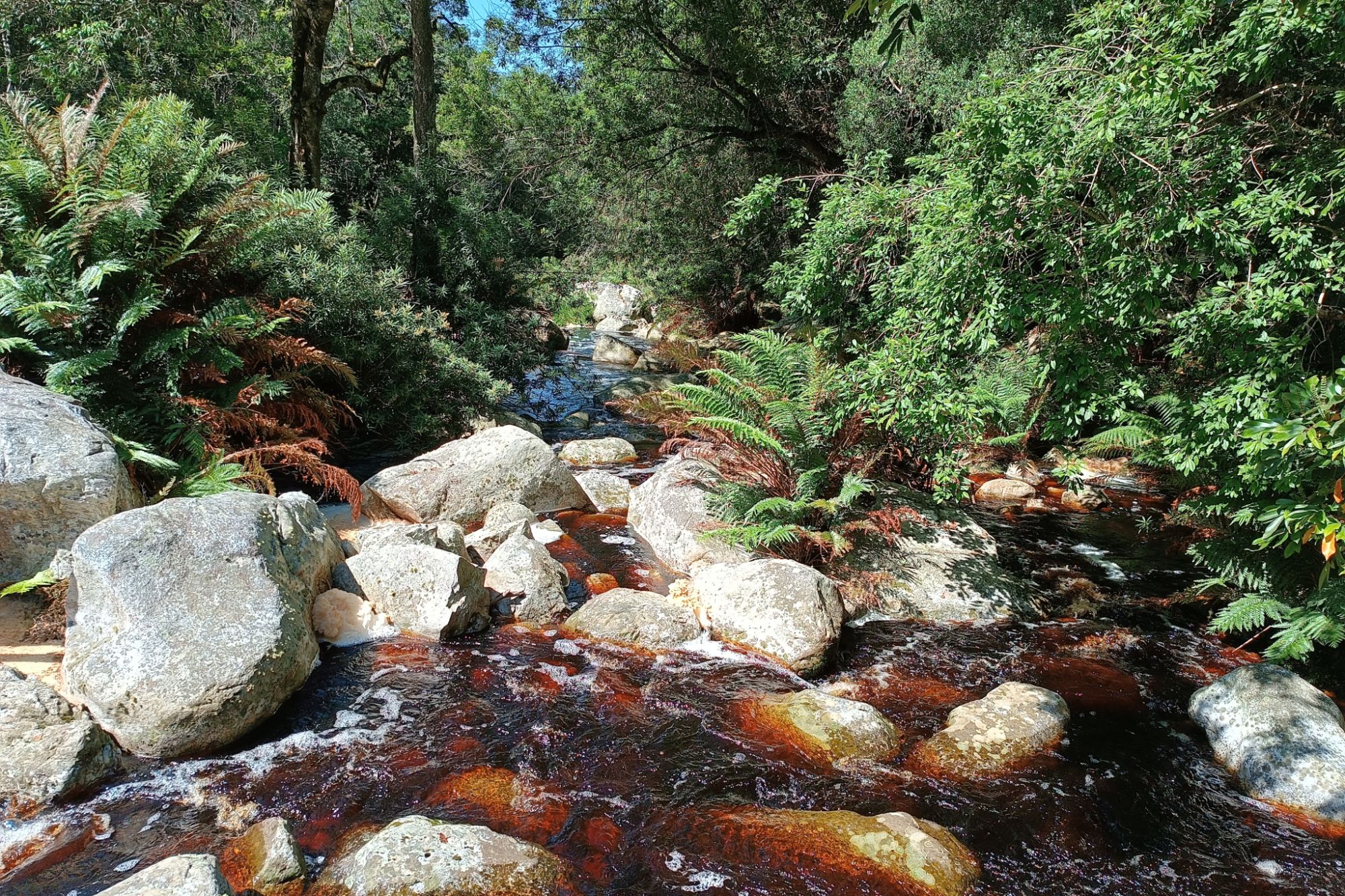
Fish and Forests: Sampling the rivers of the Garden Route Nature Reserve Complex
A baseline survey of the Garden Route Nature Reserve complex was completed in January 2024 to provide updated information on the freshwater fish community of the reserve complex and inform future management interventions. Data from these surveys also feed into Red List Assessments for freshwater fish and provide decision support for land-use decision-making. The reserve complex spans several river systems, including the Gouritz and the headwaters of many of the smaller coastal catchments of the Garden Route. The river types sampled range from muddy ‘karoo’ type rivers on the northern side of the Outeniqua mountains to the dark and mysterious peat-stained rivers typical of the Garden Route. Different river types mean different fish species and six indigenous fish species were detected. These include three different redfin species, the Cape kurper, Cape galaxias and the migratory longfin eel.

Deploying a fyke net in the Silwer River upstream of Wilderness.

Contagious collaboration: staff from CapeNature and SANParks sampling in the headwaters of the Swart River upstream of Garden Route Dam.
For most sites, the habitat was in good condition, but for some of the sites located outside of the reserve boundary, some human-induced impacts on river health were observed. In addition to providing fish sampling training to regional staff, the survey also provided the opportunity to work together with colleagues from SANParks to exchange knowledge and plan future conservation collaborations.

The dark waters of the aptly named Swart River, home to the indigenous Cape kurper Sandelia capensis and Cape galaxias Galaxias zebratus.





